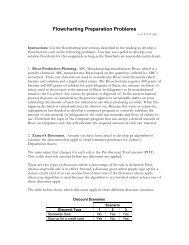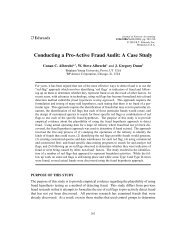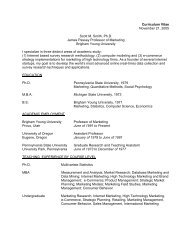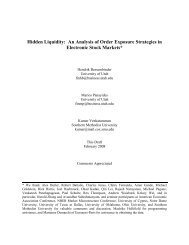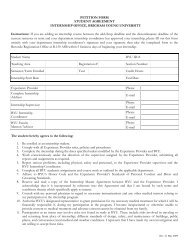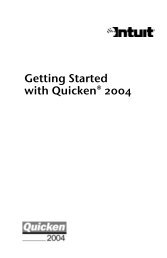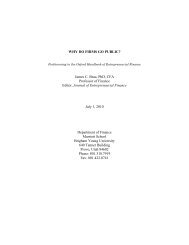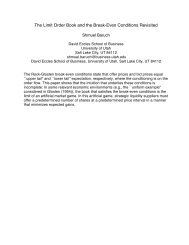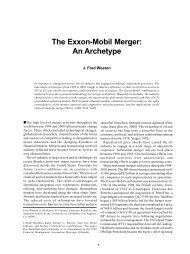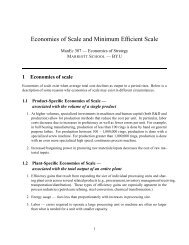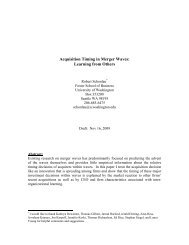Albrecht 19.pdf - Marriott School
Albrecht 19.pdf - Marriott School
Albrecht 19.pdf - Marriott School
Create successful ePaper yourself
Turn your PDF publications into a flip-book with our unique Google optimized e-Paper software.
76154_23_ch19_p942-1006.qxd 3/1/07 3:35 PM Page 976<br />
976 Part 6 Control in a Management Accounting System | EOC | EM<br />
R E M E M B E R T H I S . . .<br />
• The fixed manufacturing overhead budget variance simply measures the difference<br />
between the original budget amount and what was actually spent for<br />
fixed manufacturing overhead.<br />
• The volume variance doesn’t really report at all on how fixed manufacturing<br />
overhead costs are being used. Instead, the volume variance is an output measure<br />
that reports on the difference between expected production volume and<br />
actual production volume.<br />
• The formula for the volume variance is based on whatever activity (for example,<br />
direct labor hours) that the company chooses to use to apply fixed overhead<br />
costs to production. The formula for the volume variance is:<br />
(Standard level of activity allowed Original activity level planned)<br />
Standard overhead rate per activity unit.<br />
• An alternative, and more direct, formula for the volume variance is:<br />
(Actual production volume Original production volume planned)<br />
Standard overhead rate per unit of production.<br />
• The volume variance is combined with the fixed manufacturing overhead budget<br />
variance and the variable manufacturing overhead spending and efficiency<br />
variances to account for over- or underapplied overhead.<br />
REVIEW OF<br />
LEARNING OBJECTIVES<br />
1<br />
Describe the responsibility accounting concept and identify the three types<br />
of organizational control units.<br />
• Decentralized companies delegate decisions and responsibility to lower-level managers while<br />
centralized companies retain decisions and responsibility to run the business at higher levels of<br />
management.<br />
• In order to support a responsibility accounting system, business units may be classified as cost<br />
centers, profit centers, or investment centers.<br />
2<br />
Describe standard costing and use materials and labor cost variance analysis<br />
to explain how performance is controlled in cost centers.<br />
• Standards are budgeted costs and budgeted usage that serve as benchmarks to compare<br />
against actual costs and actual usage. Differences between standard and actual are called<br />
“variances.”<br />
• Actual materials cost performance can be assessed separately as materials price variances and<br />
materials quantity (or usage) variances.<br />
• The materials price variance formula is:<br />
• The materials quantity variance formula is:<br />
(Standard price – Actual price) Actual quantity.<br />
(Standard quantity allowed – Actual quantity used) Standard price.<br />
• Actual labor cost performance can be assessed separately as labor rate variances and labor efficiency<br />
(or usage) variances. The formula for labor rate variance and for labor efficiency variance<br />
is very similar to the formula for materials price and materials quantity, respectively.



